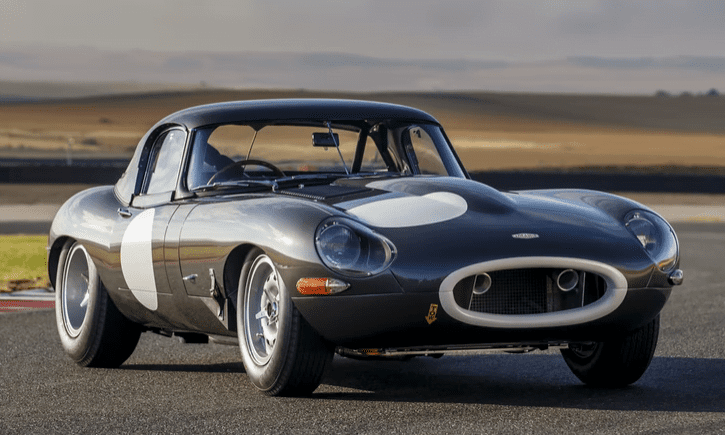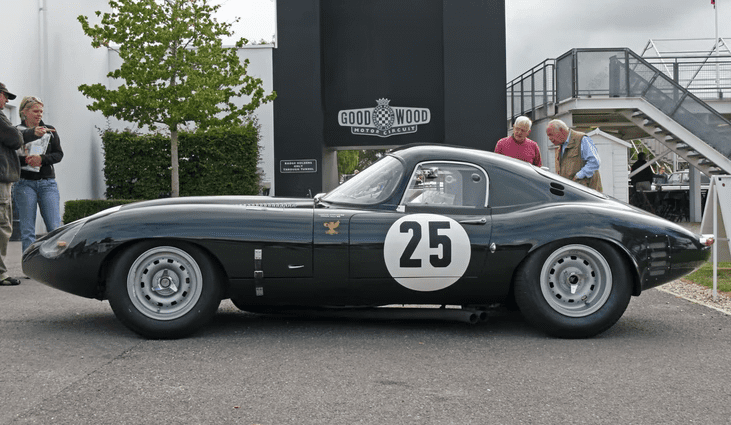The E-type has entered the racing savannah of the Fédération Internationale de l’Automobile
If I have to be frank I only learnt about this car through Forza Horizon 4. That said I would like to make a big claim and that is, why is this bloody car in Horizon rather than the motorsport series? It is outrageous. Though looking at its price tag in the auction house I was completely staggered by the price costing around 1 million credits just to bid! My house cost less than that.
Though I learnt to understand why it was so expensive since this car is so rare you could either get it through completion of some challenge or the auction house. This is no different in real life however as this car would cost around $10 million. To put that into perspective it would be like feeding the whole of New York with 10 million slices of dollar pizza, though we won’t jump into Clarkson making fun of Americans as that is a topic for another discussion.
So now you and I are wondering “why is this car so expensive?” well it is because there was only 12 ever made and it has a glorious track record at the races(slight overstatement). Okay, now you might be wondering “how could its racing pedigree make a $10 million difference then?” we have to go back to why the lightweight was even conceived in the first place. Jaguar had been blessed by the success of the E-type and its recent racing success at LeMans with the D-type. But why would there be any need for Jaguar to flex his paws in Le Mans when the E-type is already a breakthrough in sports car sense I mean top speed 145 mph, disc brakes, all aluminium body and a powerful 3.8L option of a straight-six engine?
Cue in 1961, the Bay of Pigs invasion failed, the first human was sent to space, the WWF was established and the FIA was a little bored. So the FIA created a GT category for production sports cars, into which the E-type fit perfectly. Only an itsy bitsy teenie weenie tiny problem, the E-type was made for British roads and not for race tracks like Le Mans so Jaguar had to go back to the drawing board to conceive a new breed of feline. Cut to the next slide and cue in the lightweight.
(You can thank me later for the link) So in the process of making the lightweight, Jaguar originally thought of a V12-powered mid-engine racing car would do the trick but that evolved into the XJ13 to which it never raced. Then Jaguar leapfrogged to the Low Drag Coupe project created a more streamlined body shape to increase aerodynamics made from lighter gauge steel and more aluminium to save a few pounds (Brexit joke). This resulted in a 20 mph increase in speed and improved handling.
The Low Drag Coupe E-type
This eureka moment that was formed out of the Low Drag Coupe led to further tweaking and aerodynamical changes which led to the Lightweight with a race-tuned 350 hp 3.8L straight-six, a coupe-styled hardtop, top speed of 170 mph and 0-60 mph in 4 seconds, the lightweight was born. And boy Enzo was caught with his trousers down when it turned up at Sebring in 1963.
In the 1963 Sebring 12 Hours, the car won first place in its class and finished seventh overall at the hands of Ed Leslie and Frank Morrill. The first Lightweight E-type went to Jaguar team owner John Coombs. With Hill at the wheel, it won at Snetterton, Goodwood and Silverstone – winding British circuits allowed the torque of the latest 3.8-litre straight-six XK engine could launch the Lightweight out of corners faster than you can say, Jack Robinson. Jack Robinson ah shi-
But tragically, on larger, faster international circuits – such as Spa-Francorchamps, the Nurburgring and ultimately Le Mans – the improvements to the Lightweight E-type weren’t enough to keep the Jaguar ahead of its Italian rivals. A final and honourable attempt in 1963, Briggs Cunningham entered three Lightweight E-types at Le Mans, but could only manage the ninth place. Ferrari knocked out the top six results.
But the Jag refused to give up without a fight. In 1964, the Lightweight returned with a wider set of wheels, stiffer suspensions and higher-lift camshafts. Oh and a young and still unfamiliar driver with universal amounts of potential took the driving seat in Brands Hatch. He is from Scotland and no it’s not the Stig’s Scottish grandfather. It’s Jackie Stewart. Oh and he drove the car to victory too. Class.
Since then, the E-type continues to be raced, honed and modified by private owners and is always a popular and successful entry in national and international historic sportscar series such as the Goodwood Revival. The E-type may not have been Jaguar’s most successful racer, but in this particular part of Jaguar’s history, the Lightweight should not go unnoticed not only for its stunning curves, erotically loud 3.8L straight-six or the speed it could achieve. Instead, we should recognise and be grateful for the racing ambition the Jaguar racing department had in 1961 and although it may have not been as successful as its forefathers, there is no denying that it gave Ferrari a run for their money with half the effort.





